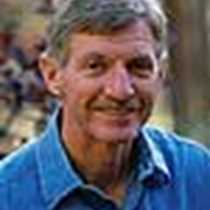Kiel Canal/At Sea
The very early risers were out on deck to watch the Endeavour enter the Holtenau Lock and leave the Baltic Sea behind. The morning was spent slowly cruising through the tree-lined Kiel Canal, known here in Germany as the Nord-Ostsee Canal. Besides the ship traffic, mute swans, coots, mallards, cormorants, black-headed gulls, a great crested grebe, a grey heron, and other birds were taking advantage of the man-made waterway. In the adjacent fields, hooded crows and lapwings were feeding amongst the stubble.
This 61-mile shortcut from the Baltic to the North Sea was constructed between 1887 and 1895. The canal is 338 feet wide and 37 feet deep and is spanned by seven high-level bridges (each one about 140 feet high). Originally, the canal served German military needs and was enlarged in 1907 and again in 1914 to accommodate larger naval ships.
After World War I, with the signing of the Treaty of Versailles, the canal was internationalized but left under German administration. Traffic on the canal was subject only to general policing, shipping, sanitary, and customs regulations. However, these regulations were repudiated by Adolf Hitler in 1936. At the end of World War II, the conditions set by the Treaty of Versailles guaranteeing freedom of navigation were reinstated.
Later in the morning, under a brilliant sunny day, a delightful brunch was served on the pool deck as the lovely countryside drifted by.
Many container and supply ships sailed by including the largest German military supply and hospital ship, the Berlin, which came bearing down on us but fortunately passed to port.
By mid-day the Endeavour entered the Brunsbuttel Lock and descended into the North Sea to continue our journey to Holland. Afterwards, Ron Suny gave another informative lecture—this time on “The Fall of Communism.” Following tea, Rodney Minott introduced the documentary video “The Battle of Jutland.”
Before heading off to bed, Steve Zeff used some of his creative photos that he had taken during the voyage to give an informal talk about photography.
The very early risers were out on deck to watch the Endeavour enter the Holtenau Lock and leave the Baltic Sea behind. The morning was spent slowly cruising through the tree-lined Kiel Canal, known here in Germany as the Nord-Ostsee Canal. Besides the ship traffic, mute swans, coots, mallards, cormorants, black-headed gulls, a great crested grebe, a grey heron, and other birds were taking advantage of the man-made waterway. In the adjacent fields, hooded crows and lapwings were feeding amongst the stubble.
This 61-mile shortcut from the Baltic to the North Sea was constructed between 1887 and 1895. The canal is 338 feet wide and 37 feet deep and is spanned by seven high-level bridges (each one about 140 feet high). Originally, the canal served German military needs and was enlarged in 1907 and again in 1914 to accommodate larger naval ships.
After World War I, with the signing of the Treaty of Versailles, the canal was internationalized but left under German administration. Traffic on the canal was subject only to general policing, shipping, sanitary, and customs regulations. However, these regulations were repudiated by Adolf Hitler in 1936. At the end of World War II, the conditions set by the Treaty of Versailles guaranteeing freedom of navigation were reinstated.
Later in the morning, under a brilliant sunny day, a delightful brunch was served on the pool deck as the lovely countryside drifted by.
Many container and supply ships sailed by including the largest German military supply and hospital ship, the Berlin, which came bearing down on us but fortunately passed to port.
By mid-day the Endeavour entered the Brunsbuttel Lock and descended into the North Sea to continue our journey to Holland. Afterwards, Ron Suny gave another informative lecture—this time on “The Fall of Communism.” Following tea, Rodney Minott introduced the documentary video “The Battle of Jutland.”
Before heading off to bed, Steve Zeff used some of his creative photos that he had taken during the voyage to give an informal talk about photography.




